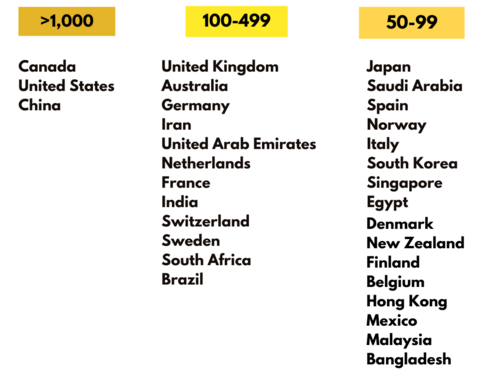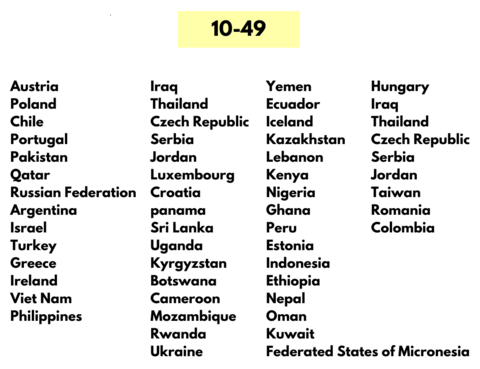Summary of academic SDG connections
The University of Waterloo clearly has a plethora of people working to build a more sustainable world. The case studies outlined above, and the many other groups and programs not mentioned, have profound impacts that are often difficult to measure.
The graphics presented in this section provide a summary of the number of researchers, publications, field-weighted citation impact, collaborations across the globe, and courses that are directly related to each SDG.
These outputs provide insights into the sustainability expertise and innovation generated by the University of Waterloo, and areas of comparative research and educational activities and opportunities. Finally, a map of SDG collaborations highlights the international dimension of the university’s research.
Number of researchers per SDG
Figure 1 shows a bibliometric analysis of the number of faculty names with at least 3 publications in an SDG between 2016 and 2020. SDG 17 is not included since partnerships to achieve the SDG goals are not easily identified through keyword searches. Limitations to this analysis include SDG-related work that is not picked up by keyword searches, researchers who may have generated fewer publications than the cutoff of 3, authors whose association with the University of Waterloo changed during that time (e.g. joined or left the campus), or researchers who do not have a Scopus ID.
Unsurprisingly, areas such as health (SDG 3) and energy (SDG 7) that are often targets for research funding, have high research engagement. Many sustainability research topics, including water-related research, produce publications that span multiple SDGs and may not therefore manifest as prominently on this graph.
An accessible version of the data can be downloaded here:
Number of publications per SDG
As seen in Figure 2, research publications from the University of Waterloo span all SDGs. As with the number of researchers, SDG 17 is not included because keyword searches are ill suited to identifying partnerships. The number of publications in the fields of health and energy (SDG 3 and 7) are high due in part to the availability of funding and pace of publication in these areas.
The field-weighted citation impact shows that the publications generated by the University of Waterloo are having stronger than average impacts in all fields. Field-weighted citation impact is the ratio of the citations for a publication and the number of citations expected based on global averages for that field of study. A value greater than 1 indicates a higher-than-average impact.
An accessible version of the data can be downloaded here:
Map of SDG collaborations
The map in Figure 3 below highlights the countries with which faculty have developed working collaborations. These collaborations were identified through joint authorship on publications. Each of the 81 countries highlighted collaborated on a minimum of ten publications between 2016 and 2020. It is noteworthy that most of the collaborations were either in developed countries or in countries with large populations (China, India, and Brazil). Notably less prominent, are collaborations with authors from Least Developed Countries where there is an urgent need to see the greatest gains in all of the SDGs.
An accessible version of the data can be downloaded here:


Number of courses per SDG
Figure 3 shows that all SDG topics are covered by undergraduate and graduate courses at the University of Waterloo. This is a first-pass assessment using the information available in course descriptions and SDSN Canada keyword searches, followed by a manual review of positive hits. A single course may be counted in more than one SDG. Courses deemed very likely or likely to have SDG content had keyword matches and course descriptions had likely or potential alignment with SDG targets and indicators. Courses deemed to have possible SDG content did not have keyword matches but did have likely or potential alignment with SDG targets and indicators.
Limitations to this approach include the very limited content available in course descriptions, potential differences in interpretation by instructors in creating course syllabi that may place emphasis on other topics, and treating each course listing as equal, regardless of the number of offerings or course enrollment.
An estimated 14% of undergraduate students are graduating from a program that requires a sustainability-focused course, based on definitions provided by the Association for the Advancement of Sustainability in Higher Education and focused primarily on environmental sustainability topics.
An accessible version of the data can be downloaded here: